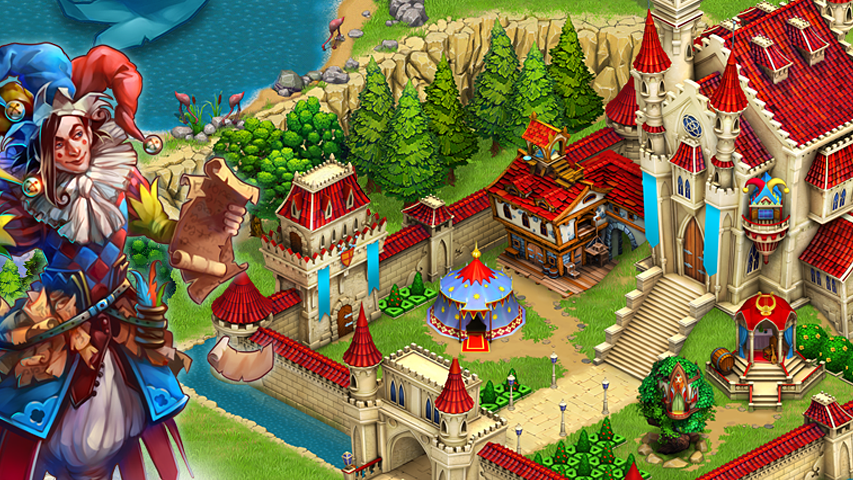How do I work with users of free-to-play games?
General Producer of the Game Garden company Ivan Gorelov told App2Top.ru about the intricacies of working with users at various stages of the development of a free-to-play project.
Ivan Gorelov
In F2P, it is necessary to work closely with the players.
If for a paid game it is enough to force the player to buy the application once, and then, "even if the grass does not grow," then the success of the free project fundamentally depends on the player's satisfaction with your service.
For this reason, when developing modern mobile and social games (most of which are "shareware"), it is important to remember three key things.
- Every project is made for the players, so their opinion is extremely valuable;
- Every negative review is a great opportunity to improve the project;
- Players should always be listened to, but it is important to be able to understand them.
We'll talk about it all.
Letters of criticism
In the absence of stimulation, players often write negative reviews (this is especially typical for the Russian market).
This is not a reason to get upset. On the contrary, it is a reason to think about what exactly a person is dissatisfied with.
The problem is that most users often do not understand the true reason for their irritation with the project, so they may not point to what is actually the source of their resentment. As in the case of illness, each specific angry letter is only a symptom of the disease.
There is no disease “everything in the game is very expensive” — there is a problem “the player's growth curve is too steep”.
The player writes: “boring tasks.” This can be a symptom of a number of problems: there are too few tasks at his level; the conditions for completing them are too difficult, and he does not feel progress; the need to insert some interactive elements or animations into the tasks.
Even error messages may not be what they seem.
2 years ago, the most common complaint was: my hard currency was missing/ you stole my hard currency. Through a lot of research, we managed to establish that the problem was not server errors, but that players spent currency not on buying any content, but on accelerations, temporary bonuses, etc. The players did not realize that money was also going to this one. And when, after a while, the player looked at the current balance, he did not understand the reason for its change.
All of the above indicates not that the "player is stupid", but that you did not "finish", did not explain, did not draw clearly.
How to minimize the possibility of "under-promotion"? Interact with users at all stages of development!
Fairy Kingdom
Interaction with users at various stages of project development
1. Pre-production
As soon as you have decided to create a specific game, you should immediately start attracting as much target audience as possible to evaluate the idea, tell the plot and mechanics, show pictures of layouts and closely monitor the emotions of respondents.
Important: this activity is not for a professional marketer (everyone will be too happy), and not for a shy employee (everyone will get bored and no one will like anything).
It especially helps to draw several “screenshots” in different styles and see which one causes the greatest response.
There are many different methods of surveys, questionnaires, etc. But, in principle, it's even just a question of “what do you think about this?”given to a dozen people, it will make it clear: is there any point in developing such a project.
2. Early Alpha
The sooner you have a prototype in your hands, the better. Now you can let people feel the mechanics and understand more precisely whether you guessed right or not.
We conducted our first focus tests among the employees of our media holding. They showed prototypes to the girls at the reception, accounting, and managers of other projects. But at some point I had to “go outside.” Personally, it was quite unexpected for me that it turned out to be very easy to find a person for focus testing. It is enough just to place an ad on one of the resources with one-time jobs. For a very modest amount (1000 rubles for 1-2 hours of play) We managed to invite a few dozen people, record their game on video, filter out the most important points, and then make a list of edits.
And, in principle, it's okay if you have to start all over again. It can be much worse if you delay with an unsuccessful choice of mechanics and setting before release.
Show the prototype, watch how people play. Ask them what they would like to add or remove from the game.
See at what points the "plugging" happens.
When a player starts asking questions about what, what is needed, and what to do next, it's bad, but it can be corrected.
After all, it can be much worse: when a person gets bored of the game after 3-4 minutes, but he continues to play out of politeness (here it should be understood that any person from the street to whom you show the game will be more loyal and correct than your future players).
A boring or incomprehensible game in the first 5 minutes is almost a guaranteed fail on the market. And it won't matter to anyone that then there will be epic dragons and dinosaurs with lasers.
So, a few years ago, when we were just exploring the mobile games market, we assessed the problems in completing the tutorial only from the perspective of developers. This, in general, was the reason for the closure of several projects: we did not understand why so few players pass the tutorial, why there are so many failures at the first levels. But already in our last games, after a series of focus tests (and the introduction of all edits), it turned out to increase the percentage of players who passed the tutorial by 10-20%, reduce the curvature of the distribution of the pyramid of levels by 1.5-2 times.
Be sure to let the children play the game.
There will simply be no better criticism of your tutorial and calculated gameplay!
This is a real test for the project — players who do not read the text, whose attention is constantly distracted and who may not be at all interested in the goals you propose.
3. Closed Beta
The game is almost ready and, as you think, it will be interesting for the players. We need to continue to conduct focus testing on completely random people. But it's not so much opinions that matter here, as their emotions during the game.
4. Release
After the release, the most important thing is debugging the application and support (release of regular updates).
I repeat, we make F2P games, which means that we provide services to players on a daily basis. The key to the success of all our games is regular and constant updates. Players need to understand that they are appreciated, and the game is constantly evolving.
For both the first (debugging) and the second (support), it is important to understand exactly what is worth doing. And that's where they help:
- Player Reviews;
- Analysis of player behavior (statistics).
Positive reviews are at least useless, and at most harmful, because they cause excessive self-confidence and relaxation.
When we released our “Magic Farm”, everyone was very happy: both us and the players. We regularly received joyful and grateful feedback. But over time, we found that users leave much earlier than we expected. In addition, the revenues were far from the desired indicators. Reluctantly, we raised the prices. Immediately we received a barrage of angry letters! But at the same time, both the money and the player's life span increased 1.5-2 times. It used to be easy to play, which means it was boring. However, no one understood this.
The Magic Farm
Statistics
And the statistics will always tell you what the players can't say.
You should add a counter to each window and each button.
We have introduced a new special, time—limited offer with a content package - add checks:
- How many players have seen it;
- how many have used it;
- and how many of those who did not use it had enough money to buy?
Of course, many graphs will be interesting once a year: a table of levels, a tutorial. The chart that I looked at once, made sure that everything was fine — and forgot.
Some of them will be interesting after each update: player spending, the percentage of new tasks completed, the popularity of payment packages, changes in player purchase charts over time and linked to updates.
Some of them become mandatory for daily viewing, along with letters from players.
Of course, excessive statistics can be harmful if there is no clear methodology for its analysis. But in no case should you remain in the dark about the situation in the project. Many problems can be nipped in the bud if you keep your finger on the pulse of the project all the time. For example, the problem of an overabundance of currency in the hands of players and insufficiently wide gateways for its withdrawal.
The macro parameters that the platforms give allow you to roughly understand the course of the game's development. But to be guided only by them is like launching a rocket and judging the success of the launch by whether it exploded in flight or not.
Resume
In no case do I pretend to have told you about something radically new. All of the above is well known and is actively used by many successful gaming companies.
Nevertheless, I hope that this text will give someone some interesting thoughts of their own.
In addition, the guidance of the principles outlined has allowed us to significantly increase the organic influx of users, significantly reduce marketing costs, and simply make our products much more effective.
And most importantly, remember: your players are ordinary people who somehow found your game. They may not understand something about game mechanics or interface solutions. But they are many times better than the spherical ideal player in a vacuum that you would like to see... because you already have them!
Working with users, maintaining the community of the game, regular technical support responses — this is what allowed us to earn our first million.



